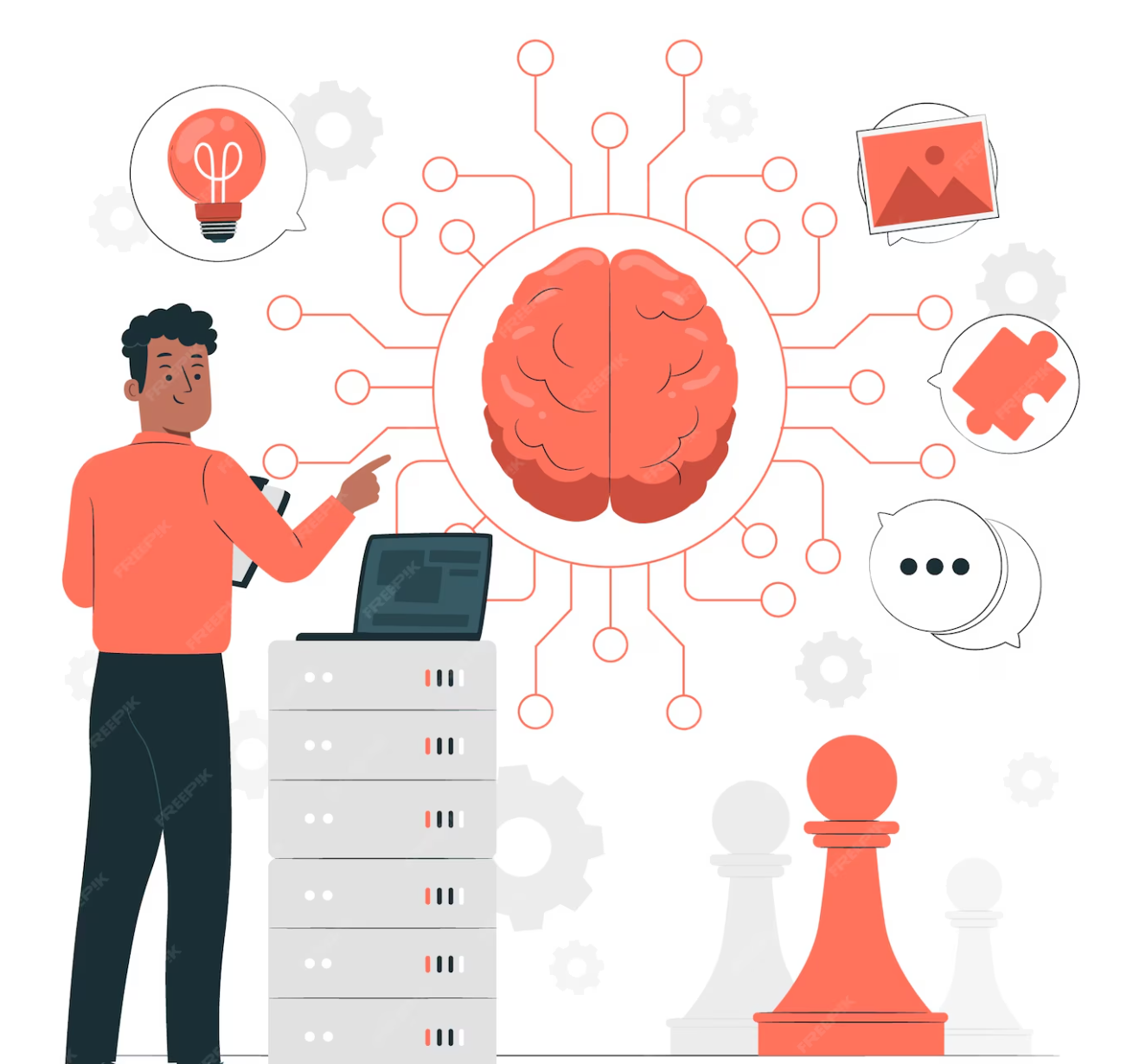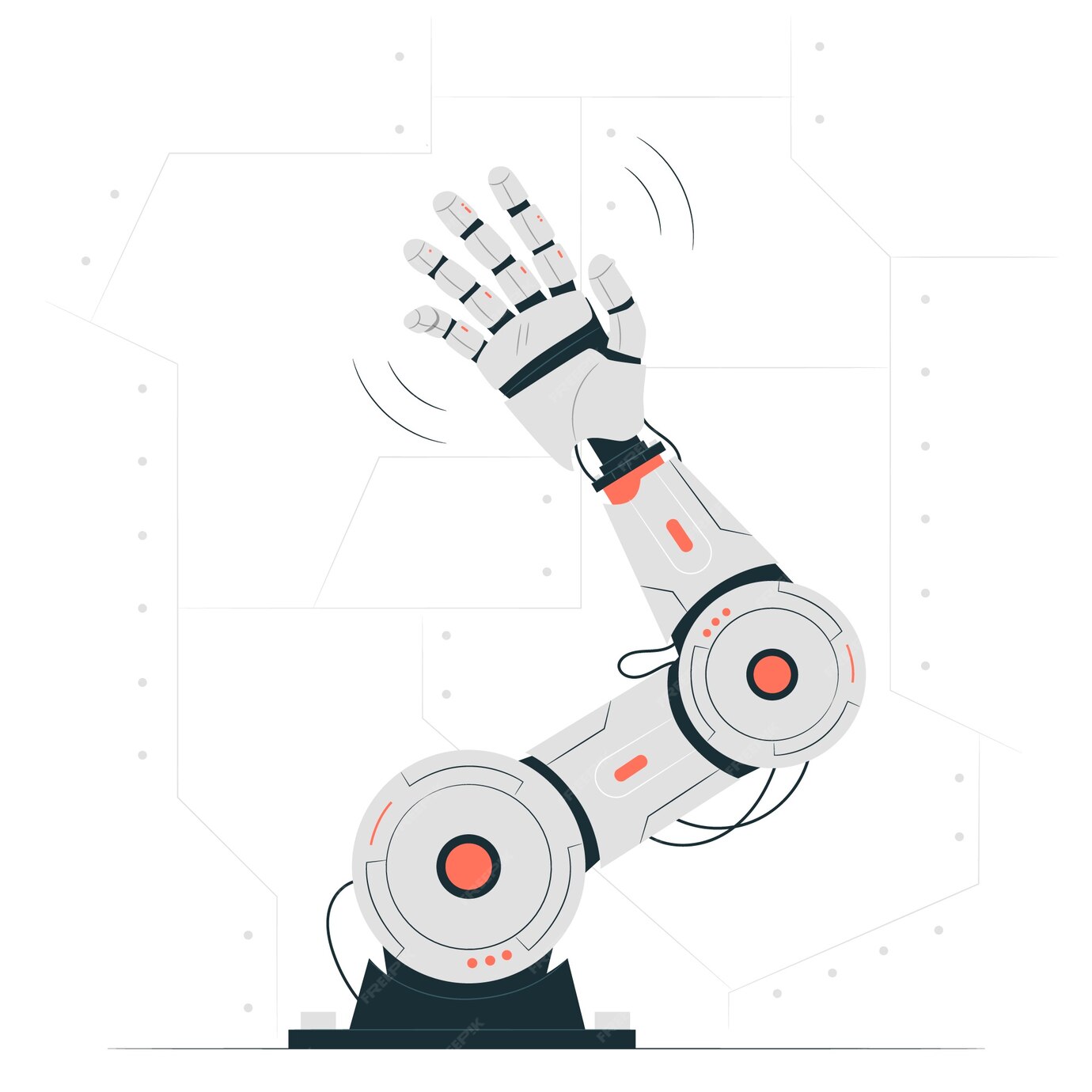AI-generated content refers to text, images, audio, or video created by artificial intelligence systems. These systems use machine learning algorithms and natural language processing (NLP) to analyze large datasets, learn patterns, and generate content miming human writing or creativity. Examples include AI-written articles, automated social media posts, and AI-generated artwork.
The concept of AI-generated content dates back to early computer experiments in the mid-20th century, where simple programs were used to generate basic text. Over the decades, advancements in artificial intelligence and machine learning have significantly improved the complexity and quality of generated content. Key milestones include the development of chatbots in the 1960s, early NLP models in the 1980s, and more recent breakthroughs like GPT-3 and DALL-E, which can produce highly sophisticated and contextually relevant content.


Benefits of AI-Generated Content
Efficiency and Speed
One of the most significant benefits of AI-generated content is its efficiency and speed. AI can create content much faster than human efforts, allowing businesses to keep up with the high demand for fresh and engaging material. The ability to generate large volumes of content in a short time is particularly beneficial for industries that require frequent updates, such as news media, marketing, and social media management. For instance, an AI certificate maker can quickly produce personalized certificates for online courses, saving educational institutions significant time and effort.
Similarly, an AI flyer generator can help businesses and event organizers create professional-quality flyers in minutes, streamlining the design process and ensuring consistent branding. This makes it an invaluable tool for marketing campaigns, promotional events, and small businesses aiming to create impactful visuals without extensive design skills.
Cost-Effectiveness
AI-generated content also offers cost-effectiveness, particularly by reducing labor costs associated with content creation. You can create various types of content, even the small ones that you might need to outsource. Now, you can even make creative slides without graphic designers using a text to PowerPoint tool to and you can use tools like visme which is a great ai presentation maker that can help you in creating amazing presentation. These AI slides creators are affordable solution for small businesses and startups that may not have the resources to hire extensive content creation teams. Automating content production helps businesses allocate their budget more efficiently. For example, companies can use savings from AI-generated content to invest in other crucial areas like Netsuite consulting. When comparing the costs of traditional content creation to AI-generated content, the savings are evident, making AI a viable option for businesses looking to optimize their expenditures.
Consistency and Standardization
Another advantage of AI-generated content is its ability to maintain consistency and standardization across various outputs. AI systems ensure uniformity in style, tone, and quality, eliminating the inconsistencies often found in human-created content. This is crucial for brands that maintain a cohesive voice across all platforms. Industries such as customer service and social media management using an SMM panel particularly benefit from standardized content, as it ensures that all communications align with the brand’s identity.
Personalization and Customization
AI’s ability to personalize content to individual preferences and needs is a game-changer in enhancing user experience. AI can create highly personalized content that resonates with the target audience by analyzing user data. Some use AI in product research as well for their marketing campaigns, enabling companies to understand consumer preferences at a deeper level. This level of customization is evident in successful marketing campaigns that use AI to deliver personalized messages and offers to customers.
AI can also help you collect data and user feedback to make the campaigns more personalized. It can assist in identifying common trends and tendencies among the users and how you can implement them for personalization.
For example, AI can analyze a user’s browsing history and previous interactions to suggest products or content they are likely to be interested in, thus improving engagement and satisfaction. Also, AI has developed so much that it can make custom logo designs for your brand without any additional help.
Accessibility and Inclusivity
AI-generated content also plays a huge role in promoting accessibility and inclusivity. AI can generate content in multiple languages, making information more accessible to a global audience. Moreover, AI systems can create content that is accessible to individuals with disabilities, such as generating text that is compatible with screen readers. This helps ensure that more people can benefit from digital content regardless of their linguistic or physical limitations.
Fast-Track Your Visual Content
As businesses seek faster, more engaging ways to communicate, text to video AI has emerged as a powerful solution. This technology allows you to instantly convert written content—like blog posts, scripts, or promotional text—into compelling videos with voiceovers, animations, and branded visuals.
Whether you’re launching a marketing campaign, updating social media, or creating educational materials, text to video AI dramatically cuts production time while maintaining consistency and visual appeal. It’s an ideal tool for marketers, educators, and content teams looking to scale video production without sacrificing quality.


Limitations of AI-Generated Content
Despite its numerous benefits, AI-generated content has several limitations:
Quality and Creativity
AI often struggles to match the quality and creativity of human-generated content. While AI can produce coherent text and visuals, it may lack the originality and nuanced understanding that come naturally to humans. This limitation is particularly evident in fields requiring high levels of creativity, such as literature and art.
Contextual Understanding and Nuance
AI can sometimes fail to grasp context and cultural nuances, leading to misunderstandings or inaccuracies in the content. This is because AI relies heavily on patterns in data and may not always interpret complex human emotions or social cues correctly.
Ethical and Legal Concerns
The use of AI in content generation raises ethical and legal issues, including concerns about plagiarism, copyright infringement, and content ownership. There is also the risk of AI being used to generate misleading or harmful content, which can have serious repercussions.
Dependency and Job Displacement
An over-reliance on AI for content creation could reduce opportunities for human creativity and potentially displace jobs in the content creation sector. Balancing AI integration with human employment is crucial to prevent negative social impacts.
Technological Limitations
Current AI technology has its limitations, including potential failures and inaccuracies. While AI is improving, it is not yet perfect and requires ongoing advancements to enhance its reliability and effectiveness.
Balancing AI and Human Efforts
A balanced approach combining AI and human efforts is essential to take advantage of the full potential of AI-generated content while mitigating its limitations.
Complementary Roles
AI can handle repetitive and large-scale tasks efficiently, allowing humans to focus on more creative and strategic aspects of content creation. It can help answer repetitive questions among various teams, from marketing to sales.
Businesses can use AI in human resource management to answer queries based on documentation, leaving time to address more essential tasks. For example, AI can generate initial drafts or perform data analysis while humans add the final touches, creativity, and context.
Implementing best applicant tracking software can further enhance HR processes by automating candidate screening and improving overall efficiency.
Enhancing Human Creativity
AI tools can enhance human creativity by providing inspiration and automating mundane tasks. This enables content creators to spend more time on innovative ideas and high-value projects.
Human Oversight
Ensuring human oversight is crucial to maintaining quality and ethical standards. Humans can review and refine AI-generated content, ensuring it meets the desired standards and accurately reflects context and nuances.
Future Prospects
The future of content creation lies in the synergy between AI and humans. As AI technology continues to evolve, it will become an even more valuable tool, expanding human capabilities and allowing for more sophisticated and effective content strategies.
Utilizing AI in content creation brings remarkable efficiency, consistency, and cost savings, making it a powerful tool for modern businesses. The ability of AI to quickly generate large volumes of content helps meet the increasing demand for fresh and engaging material across various platforms. Despite these advantages, AI’s limitations in quality, creativity, and contextual understanding underscore the need for human management and involvement.
Maintaining a balanced approach where humans and AI work collaboratively ensures that content remains high-quality, ethically sound, and contextually accurate. As AI technology continues to evolve, its role in content creation is set to grow, offering even more significant innovation potential.







